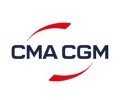IMO 2020 set to boost refinery margins: Wood Mackenzie

Tougher sulfur limits on marine fuel from January 2020 have been prompting large investments in the refining sector but changes to global markets should make the payments worthwhile, according to a senior executive at consultancy Wood Mackenzie.
The International Maritime Organization-mandated shift from a limit of 3.5% sulfur content in bunker fuel to 0.5% from January 2020 will leave the oil industry short of middle distillates and this is where refineries make back their investments, Wood Mackenzie Vice-President for Refining, Chemicals and Oil markets Alan Gelder told S&P Global Platts.
“Generally, we think [IMO 2020] will boost [refining margins] on the basis that there won’t be enough very low sulfur fuel oil available,” Gelder said.
VLSFO will be the main alternative to middle distillate marine gasoil. With little VLSFO around, MGO will likely see high demand, bunker sources have said.
However, this will profit some more than others.
“There is scrubbing and non-compliance but we see a greater requirement by the marine sector for gasoil, so generally the marine sector requiring cleaner fuels is good for refining but you end up with quite a spread in the industry,” Gelder said.
“Those who will do the best are the refiners who make more distillate than gasoline and who can process medium heavy crude and also process premium residue, because they will see an uplift in product,” he added.
“If they don’t make high sulfur fuel oil they will see no downside on pricing but they will see a feedstock advantage,” he said.
VLSFO PRICES
Platts started assessing VLSFO on a barge basis at Rotterdam on January 2.
On Tuesday, the fuel was assessed at $414.75/mt FOB, representing a $31.75/mt premium to HSFO.
Wood Mackenzie said in September that by 2020 the price differential between gasoil and HSFO would be roughly double the 2017 differential.
The gap between HSFO and MGO in 2017 averaged $166/mt, according to Platts data.
Wood Mackenzie’s September prognosis, if applied to Platts numbers, would imply a spread of some $332/mt between the two fuels by 2020.
Speaking Wednesday, Gelder predicted a more modest increase.
“We are not going to see a doubling but we believe it will grow, by something like 60%, so we’ve pulled [the differential in 2020] in a bit,” he said.
The current relationships of different fuel oil grades to crude will change, Gelder added.
The front-month — currently March — 3.5% FOB Rotterdam barge crack was assessed at an all-time high Tuesday, as unseasonable strength in the fuel oil market continued to surpass market players expectations amid falling supply and a strong pull from Singapore for HSFO cargoes.
The front-month fuel oil crack was assessed Tuesday at minus $2.90/b, the highest value since the assessment began in June 2006.
In 2020, HSFO will trade at a discount to Brent and VLSFO at a premium to Brent, Gelder said.
GASOLINE MARGINS
The gasoline crack spread has been trading around historic lows.
The Eurobob physical crack, the spread between Platts gasoline Eurobob FOB AR barges and Dated Brent, has continued to trade in the negative, with the recent prompt buying providing little reprieve to refineries. Platts assessed physical FOB barges at minus 57 cents/barrel FOB Tuesday.
The physical crack was been unable to trade out of negative territory through for first quarter of the year, leaving refineries trying to stem continued losses.
“Refineries will trim gasoline products [as they] have poor yields,” one gasoline trader said.
However, refineries are not cutting runs as expected due to strength of other products.
“We currently have strong distillate and strong fuel oil, which has kept run rates reasonably high, but gasoline is weak,” Gelder said. “The thing that will change that is the seasonal shift; the summer specification change and also the typical northern hemisphere driving patterns.”
At the end of summer, IMO 2020 will start to affect gasoline. Some of the LSVGO will be pulled into the bunker pool “and if anything FCC rates throughput will see more downward pressure” and can result in some gasoline support, Gelder said.
However, this could be offset by refiners having to run harder to produce middle distillates, which can increase naphtha and gasoline supply.
“Refiners need to run harder, shift to maximum distillate yield so we end up with naphtha and gasoline actually being weak as a result of IMO,” Gelder said.
Source: Platts

 Hellenic Shipping News Worldwide Hellenic Shipping News Worldwide, Online Daily Newspaper on Hellenic and International Shipping
Hellenic Shipping News Worldwide Hellenic Shipping News Worldwide, Online Daily Newspaper on Hellenic and International Shipping





















 PG-Software
PG-Software